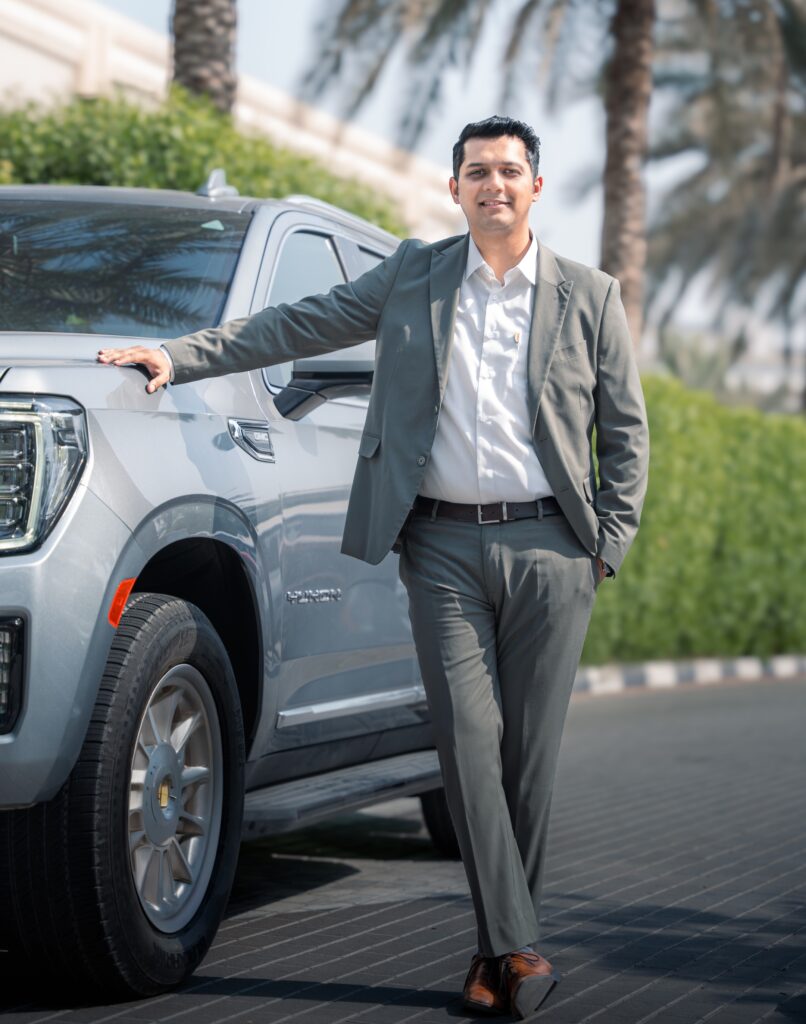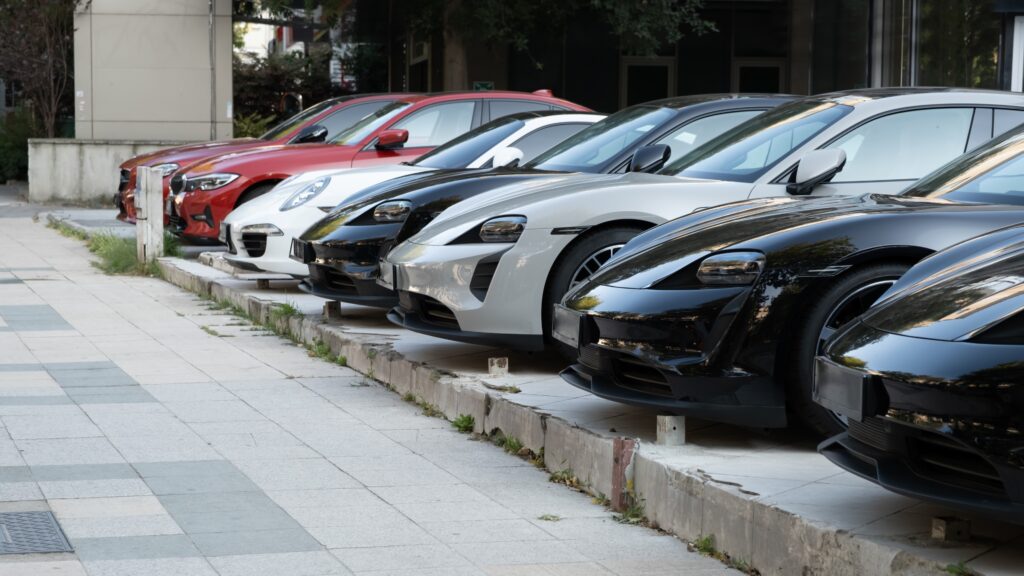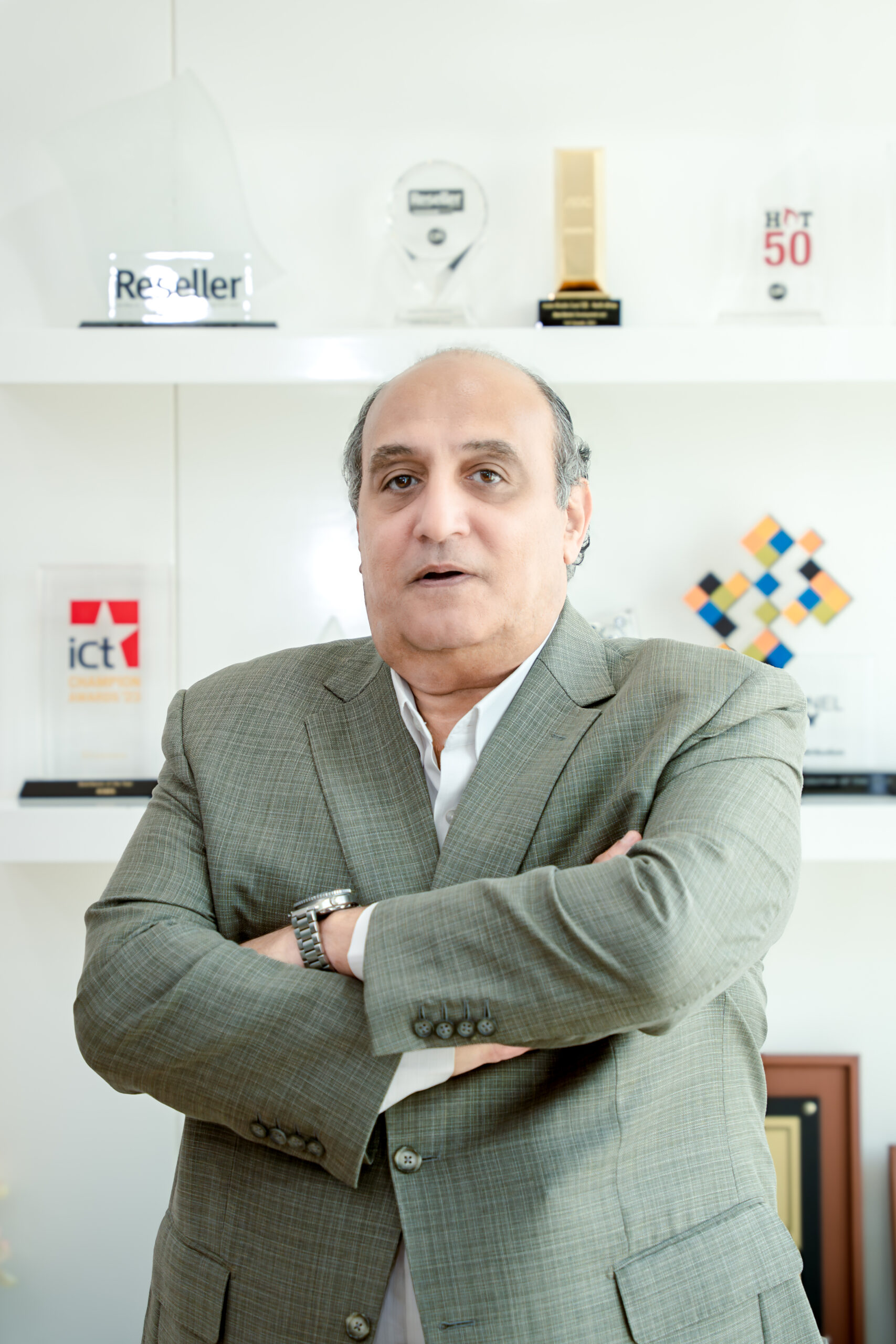Cover Story
Open Source: A 90s-Born Collaborative Champion

Open source trends will play a pivotal role in modern computing, particularly in application development and IT infrastructure. With open source’s rapid rise in prominence, the trends remain relatively obscure to the world. Open source being the ground zero for technology development has become the preferred way of growing hot new technology, particularly for start-ups. The open source juggernaut is set to sail well in 2021 and is project growth in the years to come.
From enterprise solutions to cloud architects, from containers to encryption tools, and from data tools to insight creators, open source had managed to build the most avant-garde products including security firewalls in recent years. Its consistent pattern of growth has invited major IT giants to obtain stakes in innovative projects.
Rise of Kubernetes
Kubernetes is an open-source system to automate deployment, scaling, and management of containerized applications to leverage on-premises, hybrid, or public cloud infrastructure. Kubernetes allows scaling without increasing the ops team. Before Kubernetes, the development and deployment of cloud-native applications were challenging. After Kubernetes, open source platforms do all the heavy lifting. The platform for running containerized workloads attracted developers from the open source community around the world, and its functions are quite similar to an Infrastructure-as-a-Service (IaaS) solution and a Platform-as-a-Service resource (PaaS). It also offers the facility to monitor the status of a deployment in-progress, and complements a DevOps ecosystem.
Fog Computing
Fog computing is a distributed network connecting edge computing and cloud or IoT. The core idea of a distributed network is that it connects different environments. Fog computing frameworks provide more choices to process data when appropriate.
Cisco partnered with Microsoft, Dell, Intel and Princeton University in 2015 to form the OpenFog Consortium. General Electric (GE), Hitachi, Foxconn came forward to contribute to the mission. Promotion and standardization were the primary goals of the consortium. It had also merged with Industrial Internet Consortium (IIC) in 2019.
Data Gets Bigger and Better
Big data will continue to get bigger and better. Open-source technologies will continue to make big data into the future. Let’s take a look at the powerful open source tools that handle big data.
Apache Hadoop
Apache Hadoop has enormous capabilities in processing large-scale data. It is also considered to be the most prominent tool used widely in the big-data industry. This is a 100 percent open source framework and runs on commodity hardware in an existing data center. Furthermore, it can run on a cloud infrastructure.
Hadoop has four parts, which are:
- Hadoop Distributed File System (HDFS) – a distributed file system compatible with very high scale bandwidth
- MapReduce:A programming model
- YARN:It is a platform that manages and schedules Hadoop’s resources
- Libraries:It helps other modules to work with Hadoop
MongoDB is an open source NoSQL database. It has a lot of built-in features and it is a cross-platform compatible application. It is suitable for the business that needs fast and real-time data. It also runs on MEAN software stack, NET applications and, Java platform.
Key features of MongoDB:
- It stores any type of data like integer, string, array, object, boolean, date, etc.
- It gives flexibility in cloud-based infrastructure
- It partitions data across the servers in a cloud structure
- MongoDB’s dynamic schemas is another way of cost-saving
HPCC
High-Performance Computing Cluster (HPCC) is one of the best open source big data tools and the competitor of Hadoop in the market.
Important features of HPCC:
- Helps in the parallel data processing
- Runs on commodity hardware
- Comes with binary packages supported for Linux distributions
- Supports end-to-end big data workflow management
Open Source and Cloud Factor
With most IT departments willing to avoid installing and maintaining applications locally when possible, the cloud is becoming the chosen platform for open source applications. And the trend is not just limited to small app developers; even Microsoft Office 365 is a semi-cloud offering including its chief rival Google Apps. Hybrid cloud gave enterprises choices – to figure out the right kind of cloud that can handle their workloads. However, its definition changed over time. Initially thought of in the context of cloud bursting where the on-premise infrastructure can reach out to a public cloud if usage spikes, the hybrid cloud now addresses data and application portability without racking up bandwidth bills for enterprises.
Hybrid cloud today is essentially a functional and effective combo of Software-as-a-Service (SaaS) applications, container platforms, and public clouds, which facilitates data and application portability from one location to another whenever necessary.
Open Source Security
What makes open source solutions the big fat targets is their rising popularity and ubiquity, which also makes the industry to take notice and collaboratively fund (once woefully under-resourced) projects like OpenSSL.
OpenSSL is licensed under an Apache-style license. Barring some simple license conditions, OpenSSL is free for both commercial and non-commercial purposes. Users can report vulnerabilities and they get fixed regularly.
Data Encryption
This is the foremost and basic way to secure the whole data and encrypt your entire data to encode a message or information. Starting from small-scale enterprises to large corporates spend millions of dollars for a secure way of transmitting and receiving. As chances are high for cybercriminals to keep a tab on any careless distribution of data, mainly from financial institutions, and use it for fraudulent activities. So, user inputs and personally identifiable information (PII) have to be protected with utmost importance.
Even though, there are numerous encryption tools available in both closed and open source software libraries, VeraCrypt, AxCrypt, FileVault, GNU Privacy Guard are popular among free tools.
Office Applications
Microsoft Office has an elephant share of users amongst office applications. It had further developed that to Office 365 combining email, video conference, and its traditional applications (Excel, PowerPoint, etc.). It could also propagate Office 365 as a complete solution with document control features.
In the open source arena, the Documents Foundation community’s LibreOffice based on OpenOffice.org is one of the most popular software. The group of applications is observed as a feasible alternative to Microsoft Office 365 and acts as a free tool for edit, document and distribute content. The developer community claims, “we believe that users should have the freedom to run, copy, distribute, study, change, and improve the software that we distribute.” It adds, “while we do offer no-cost downloads of the LibreOffice suite of programs, free software becomes the foremost a matter of liberty, not price.”
Apart from LibreOffice, WPS, Polaris and a few others also offer open source document solutions for mobile and computer users.
Conclusion
For open source enthusiasts, the last few years were full of exciting developments which contributed to the growth of many open source services – from open source CMS development to open source cloud. Infrastructure software is getting paradigm shifts and new developments under open source licenses massively expand their potential. Until now, there hasn’t been any disappointment for open source supporters but has exceptional resources and reasons to endorse the idea. Hopefully, we will see open source dominating even more soon.

Automotive
DRIVE NOW, BUY LATER: Cariva’s Market-Changing Philosophy

Exclusive Interview with Harshvardhan Singh, Business Head, CARIVA

CARIVA is positioned as a tech-enabled, transparent platform for used car sales. What gap in the UAE automotive ecosystem did you see that inspired you to launch CARIVA?
The UAE is a very competitive market for used cars, yet there is still a wide gap between customer expectations and the actual services available. When people buy a pre-owned car today, the first thought that often crosses their mind is, “Am I taking a risk?” This question reflects a deep concern about trust. Buyers want to know if the car is in good condition, whether it has been in an accident, if it was serviced at authorized centers, whether the odometer has been tampered with, and how many people have driven it before.
We realized that answering these questions honestly and transparently could transform the customer experience. That is how Cariva came into existence. We are not just selling cars, we are giving customers peace of mind. At Cariva, we share everything about the car openly, from its service history to accident records. Each vehicle undergoes a full inspection at a government-authorized center before a buyer makes any decision. By doing this, we flip the customer’s question from “Am I taking a risk?” to “Am I protected?” We’re not just filling a gap – we’re disrupting an entire ecosystem that has operated on opacity for too long.
CARIVA has been described as “built from the ground up” — from ideation to execution. What was the most challenging stage of bringing this venture to life?
When you are working on an idea, everything looks straightforward on paper. The reality of execution is very different. Challenges appear at every stage, and the most difficult part for us was identifying exactly what the customer wanted and where the gap existed between expectations and reality. We realized we weren’t just building another used car platform – we were disrupting decades of industry practices that prioritized profit over customer protection.
We found that many businesses in this space focus on what they want to sell rather than what customers are looking for. Our challenge was to design solutions that addressed customer needs directly. This required listening carefully to buyers, understanding their pain points, and rethinking how used cars are presented and sold. The result is a model that fills the trust gap and delivers what customers truly expect, not just what the industry is accustomed to offering.

The UAE already has established players in the used car space. How does CARIVA differentiate itself in terms of customer experience, trust, and transparency?
Used cars are now outpacing new car sales worldwide, and the UAE is no exception. Buyers are drawn to affordability, but what they value just as much is transparency and trust. This is where Cariva stands apart.
We are not in the business of simply selling a car. We provide a mobility solution that is backed by confidence and honesty. Every customer receives a detailed inspection report that includes even the smallest imperfections a car may have due to age. We also provide a complete service history, which is something customers often struggle to access elsewhere.
Most importantly, every car is backed by an original manufacturer warranty, not just a generic third-party plan. For buyers, this approach translates into confidence, flexibility, and control. They are not just making a purchase, they are making an informed decision that they can feel good about for years to come. Beyond transparency, we offer choice. With over 100+ models available from various makes, ranging from budget-friendly options to premium vehicles, Cariva ensures every customer finds exactly what they’re looking for, regardless of their budget or lifestyle preferences.
You’ve previously mentioned blending data and emotion in brand building. How does this philosophy reflect in CARIVA’s business model and customer journey?
I strongly believe in data-driven decision-making, but I also recognize that data alone cannot create meaningful connections. When combined with emotional intelligence, data becomes a powerful tool for shaping customer experiences.
Before we built Cariva, we carried out extensive market research to understand the size of the opportunity, customer needs, and pain points from past purchase experiences. The insights we uncovered were eye-opening and helped us shape the concept of Cariva in a way that directly responds to customer realities.
We also understand that every customer is unique. A car is not just a vehicle; it often reflects a buyer’s lifestyle and personality. At Cariva, we support customers at every step of their journey, from selecting the right car to arranging financing, insurance, and registration. By combining data with empathy, we are able to deliver a holistic mobility solution that respects both rational needs and emotional aspirations, making car ownership seamless from day one.

Consumer trust has always been a sticking point in the used car market. How does CARIVA ensure quality assurance in inspections, certifications, and after-sales support?
Trust is the foundation of Cariva. For too long, the lack of transparency in the UAE’s used car industry has left buyers second-guessing their purchase. We are addressing this by building trust into every stage of the process.
Each vehicle goes through a comprehensive multi-point inspection that covers the engine, chassis, transmission, gearbox, and safety systems. Cars are certified at authorized centers, and this provides customers with verified quality. We also offer manufacturer-backed warranties that remove uncertainty about hidden issues. These aren’t generic third-party warranties – they’re OEM warranties backed by authorized agencies, the same coverage you’d get with a new car purchase.
On top of this, we introduced a global-first initiative called “Drive Now, Buy Later.” This gives customers up to four weeks to take the car home, use it in their daily life, and only make the purchase once they are completely confident. Finally, our after-sales support includes service partnerships and a dedicated customer care line, ensuring peace of mind long after the car has been purchased.
By addressing every concern head-on, Cariva has created a new benchmark for trust in the pre-owned market.
With more millennials and Gen Z buyers entering the car market, do you notice a shift in how they approach buying used cars compared to traditional buyers?
Yes, there has been a significant shift. Millennials and Gen Z buyers think very differently about mobility. They are digital-first, which means they do most of their research online before they ever step into a showroom. They want transparency, easy access to information, and digital tools that help them make better decisions.
They also value experience over ownership. Many of them prefer to try before buying, which is why our Drive Now, Buy Later program has resonated so strongly. At the same time, they are far more conscious of sustainability and value. For them, pre-owned cars are not only cost-effective but also a more environmentally responsible choice compared to buying new.
Cariva is designed with these shifts in mind. Our platform is digital, transparent, and flexible, which makes it perfectly aligned with the expectations of this new generation of buyers. Whether they’re looking for their first budget-friendly car or upgrading to a premium model, our diverse inventory caters to every financial bracket without compromising on quality or trust.

The UAE used car market is experiencing strong growth, driven by rising demand for affordable mobility and certified pre-owned cars. How do you see this market evolving in the next 3–5 years?
The UAE used car market is undergoing a major transformation. It is moving away from fragmented, informal sales toward a structured and customer-focused ecosystem.
Over the next three to five years, certified pre-owned cars will become the standard rather than the exception. We will also see the digitization of the entire buying journey, from virtual car tours to online financing and even doorstep delivery. In addition, value-added services such as extended warranties, flexible return policies, and bundled insurance will become key factors in customer decision-making.
Cariva is already ahead of this curve. By offering certification, flexible ownership models, warranties, and digital convenience all under one roof, we are not just keeping pace with the market but shaping its future direction.
With the UAE accelerating its shift towards electric mobility, what opportunities do you see emerging in the pre-owned EV market, and how is CARIVA preparing to tap into this space?
Electric vehicles are central to the UAE’s sustainability vision, and with that comes a huge opportunity in the pre-owned EV market. Today, many customers are hesitant because of concerns about battery life, resale value, and the lack of proper certification standards.
Cariva is preparing to address these gaps head-on. We are partnering with specialized diagnostic providers to certify battery health and performance. We are developing EV-specific warranties and buyback programs that give customers confidence in their purchase. At the same time, we are creating awareness campaigns to educate buyers about the long-term cost savings and environmental benefits of EV ownership.
By building these solutions early, Cariva is positioning itself as a trusted pioneer in pre-owned electric mobility, fully aligned with the UAE’s national sustainability agenda.
Cover Story
BEYOND STORAGE: LEXAR’S MIDDLE EAST EDGE

Exclusive Interview with Fissal Oubida, General Manager – Middle East, Africa & India, Lexar
In the crowded world of memory storage—where products often blur together and price wars dominate—Lexar has charted a distinct course. Just three years ago, the brand was caught in the same cycle that ensnares many technology companies: chasing competitor pricing, maintaining distance from customers, and treating partnerships as transactions. Today, Lexar stands as an industry benchmark, followed by major competitors rather than the other way around. But this only scratches the surface of what we’ve accomplished, and what it reveals about sustainable differentiation in commoditized markets through an approach that seems almost anachronistic in modern tech: genuine human relationships.
Founded in 1996 to deliver innovative, industry-leading memory solutions worldwide, Lexar has transformed and grew from complete market irrelevance to leading the photography memory card segment in the Middle East and Africa markets. From a price-following commodity brand to a standard of trust and reliability, particularly in markets like the UAE and Saudi Arabia, where reseller ecosystems thrive on relationships and personal engagement.
Bridging the Gap
The industry often overlooks a critical layer of the value chain. Distributors may handle millions in volume, but their success depends on dozens of smaller resellers managing far less—and these vital partners rarely hear from the brands they represent.
Many memory companies remain detached from both resellers and end users. Their social media feeds resemble product catalogs, their strategies revolve around discounts, and authentic connection is missing. In such a market, trust is scarce, and loyalty fragile.
Immersing in the Market
Lexar rejected this detachment. Every two to three months, the company’s leadership visits partners door-to-door across the UAE and Saudi Arabia, markets where face-to-face trust is essential. India has also been part of this journey, but the foundation of Lexar’s approach was built in the Middle East. During these visits, products are brought directly into stores, resellers’ daily challenges are closely observed, and customer interactions with Lexar cards are carefully studied—insights that cannot be captured through reports or remote communications.
This philosophy mirrors Starbucks founder Howard Schultz, who worked shifts in his own cafés to understand the customer experience. Market realities cannot be absorbed from a boardroom; they must be witnessed firsthand, unfiltered.
Digital Authenticity
The same principle drives Lexar’s digital presence. While many technology brands publish sterile product updates, Lexar’s regional platforms highlight people, culture, and real interactions—team moments, community events, and behind-the-scenes glimpses.
Some worry this dilutes product focus. Lexar believes the opposite: its products exist to safeguard human experiences, and its marketing reflects that reality. In relationship-driven markets, human connection often builds stronger affinity than technical specifications alone.
Quality as Strategy
Authenticity is reinforced by quality. Unlike competitors that ship directly from factories to customers, Lexar tests every unit in dedicated facilities, cutting the defect rate to under 0.5%—well below industry averages ranging from 5% to 25%.
This goes beyond cost-benefit calculations. A defective product generates frustration, online complaints, and lost trust. Preventing such failures is not merely operational efficiency—it is reputation management.
Lexar’s partnership with SK Hynix exemplifies this approach. The brand is the only gaming memory company authorized to display the SK Hynix logo—a mark of quality from a supplier trusted by aerospace companies and NASA. While others obscure component sourcing, Lexar embraces transparency, showing customers exactly what they are buying.
Escaping the Price War
Perhaps the most significant change was breaking free from reactive pricing. Previously, entire teams monitored competitor rates to adjust Lexar’s pricing, fueling a cycle of cuts and shrinking margins.
Today, Lexar focuses on value and reliability. In the memory storage industry, every product consists of a chip that accounts for 80% of product cost, a controller, and housing. When other memory brands offer significantly lower prices, unfortunately these low prices often indicate refurbished or compromised components. By educating partners on this reality, conversations shift from discounts to dependability.
A Case Study: Trust at the Heart of Middle Eastern Markets
The clearest expression of Lexar’s philosophy can be seen in the Middle East’s reseller ecosystem. In Dubai’s Computer Plaza, Bur Dubai, and across the bustling technology markets of Riyadh and Jeddah, relationships define business outcomes. Transactions here are not purely about specifications or discounts—they are shaped by familiarity, presence, and trust.
Lexar’s approach is simple but uncommon: leadership spends time on the ground, carrying products into shops, sitting with resellers for hours, and listening to their challenges. These engagements transform transactional partnerships into genuine alliances, building credibility in ways no marketing campaign could replicate.
The results are tangible. Partners see Lexar not just as a supplier, but as an ally invested in their growth. Presence in these markets reshapes pricing conversations, shifts perceptions of quality, and elevates Lexar from a commodity brand to a trusted benchmark.
India later provided another proving ground, particularly in its vast wedding photography industry, where storage reliability is mission-critical. But it was in the Middle East that the model was first forged—the recognition that in relationship-driven markets, presence and trust are as powerful as technology itself.
The Lexar Way
What emerged from this transformation is the philosophy known as “The Lexar Way”—a commitment to human connection, uncompromising quality, and transparent value. This also represents a fundamental departure from traditional technology company operations and a unique culture that is not imposed from the top down; it spreads through example. As technology products become increasingly commoditized, companies must find new differentiation methods beyond specifications and pricing. Lexar’s experience suggests that authentic human relationships, transparent communication, and consistent value delivery can create sustainable competitive advantages even in highly competitive markets.
Active leadership engagement in the field—meeting both major and smaller partners while introducing tailored incentive programs—serves as a powerful example, motivating sales teams to adopt and replicate this hands-on approach. While the financial rewards may be modest, the gesture conveys respect and visibility, fostering loyalty far more enduring than discounts alone.
Building on this ethos, Lexar is actively cultivating a professional community of elite photographers, videographers, and content creators across the Middle East, providing workshops and forums where creative insights are shared, collaboration is encouraged, and the next generation of talent can thrive.
Looking Ahead
The memory industry will always be defined by chips, controllers, and specifications. But in practice, long-term leadership is built on trust.
In the Middle East, Lexar has shown that genuine relationships, transparent communication, and consistent quality can break the cycle of commoditization. These principles extend to other regions, including Africa and India, demonstrating that human-centered strategies are scalable across cultures.
As artificial intelligence, automation, and digital disruption continue to reshape industries, one truth remains constant: technology may evolve, but trust endures. The Lexar Way is not just a regional story; it is a blueprint for how technology brands everywhere can thrive in an era where connection matters as much as innovation.
Every memory card holds more than a chip—it carries a promise. For Lexar, that promise is reliability, authenticity, and commitment to the people who use its products. In a market obsessed with disruption, that may be the most powerful innovation of all.
Cover Story
ALIGNING TECHNOLOGY WITH THE FUTURE OF CONSUMER EXPERIENCE

An Exclusive Interview with Hesham Tantawi, Vice President at ASBIS Middle East
Can you tell us about the Robocafé concept and how partnerships are shaping its rollout?
Robocafé is a fully integrated ecosystem we have developed to align with today’s fast-paced lifestyle, delivering premium-quality coffee and soft beverages through advanced robotic service. Most of the units are manufactured in Poland and then brought to the region, where they are designed to provide customers with a seamless and innovative experience on the go.
We are actively building partnerships across the UAE and Saudi Arabia to introduce Robocafés in malls, educational institutes, convention & exhibition centers and other public spaces. Our vision is to make Robocafé a familiar presence in every major destination across the region. This is not just a theoretical concept, in Limassol, a relatively small city, seven Robocafés are already in operation.
Partnerships are at the very core of our strategy. We are not merely seeking customers but rather long-term collaborations built on trust, transparency, and mutual value. Every partnership involves sitting together, defining roles and responsibilities, and ensuring that both sides achieve shared success.
Could you elaborate on both the upcoming partnerships for Robocafé in the region and how similar concepts have already performed in other markets?
We are in the process of finalizing several strategic agreements in both the UAE and Saudi Arabia, with Robocafés soon to be introduced in high-traffic locations. Our ambition is to make Robocafé a visible and integral part of daily life, seamlessly blending into people’s routines.
This confidence stems from our proven track record in other markets. For example, in Limassol, a relatively small city, seven Robocafés are already operational and thriving. Locally, we launched a successful collaboration with IKEA at Festival Mall last year, which we are continuing in the upcoming winter season. Beyond IKEA, we are actively engaging with other leading partners to further expand our footprint.
How do you approach partnerships in mature markets versus emerging markets like the GCC?
Our philosophy remains consistent: we believe in strong, mutually beneficial partnerships. Whether in a mature market or an emerging one, our focus is on creating long-term relationships rather than transactional exchanges. This means working closely with partners, defining clear responsibilities, and ensuring that each party gains substantial value. It is a philosophy that transforms business relationships into genuine growth engines.
You also mentioned upcoming travels to Nigeria. What’s the focus there?
ASBIS is proud to participate in GITEX Nigeria 2025, marking a significant milestone as this event makes its debut in the region. The insights gained from GITEX Nigeria 2025 highlight a clear shift in focus and strategic priorities for the African tech landscape. We are actively exploring emerging markets across Africa, starting with Nigeria, Ivory Coast, and Ghana. While we already have strong partnerships in place, our goal is to strengthen these relationships and forge new ones. These countries represent rapidly growing economies with vibrant consumer bases, offering immense untapped potential to introduce our innovative solutions and expand our presence.
ASBIS is proud to be at the forefront of this transformation, reaffirming its commitment to customers and partners across North Africa, West Africa, and Central Africa (WECA), while amplifying its footprint and influence in this rapidly evolving landscape.
Let’s turn to gaming. It has become one of the fastest-growing industries worldwide, especially in this region. How is ASBIS approaching this sector?
Gaming is one of the most dynamic and promising verticals for us. We are focusing on developing customized gaming assembly PCs and expanding our vendor portfolio with specialized manufacturers to cover the full spectrum of gaming needs. As a distributor of components such as CPUs, hard drives, cases, and accessories, ASBIS is uniquely positioned to provide nearly 90% of what a gaming store requires under one roof.
We are also witnessing exponential growth in advanced simulators, where setups can cost between $100,000 and $150,000, complete with rigs, chairs, simulation and wheels. The surge in GPU demand has enabled hyper-realistic graphics and immersive experiences that were unimaginable a few years ago.
Importantly, gaming is not limited to the luxury segment. Entry-level PCs can start at around $500, while professional gamers may invest thousands of dollars in their setups. This diversity allows the market to cater to enthusiasts across all budgets.
Of course, supply chain challenges remain, as high demand and long lead times can cause product shortages. To mitigate this, ASBIS invests heavily in inventory, ensuring timely availability and consistency across markets. This commitment has positioned us as one of the most reliable suppliers in the region’s gaming ecosystem.
How does retail fit into your strategy, and how do you support your partners in this space?
Retail plays a critical role, particularly in gaming, where customers often want hands-on product experiences before making a purchase. We have seen retailers evolve significantly, they no longer focus solely on space but are increasingly invested in actual sales performance.
Our responsibility goes beyond supplying products. We aim to help retailers move stock efficiently, because when sales rotate quickly, everyone benefits. To support this, ASBIS has developed a dedicated training department, the only distributor in the region to do so. We provide training not only to our own teams but also to merchandisers, promoters, and even our partners’ sales staff.
A single well-trained sales manager can outperform ten untrained individuals, and this principle has become a cornerstone of our retail approach. This investment in human capital is what sets us apart as a value-driven distributor.
Beyond gaming and retail, ASBIS also represents premium lifestyle brands. Could you share more about this side of the business?
We work with globally prestigious brands such as Bang & Olufsen, widely regarded as the Dior or Louis Vuitton of the audio industry. Their offerings are synonymous with exclusivity, luxury, and design excellence.
Interestingly, we see overlap between high-end lifestyle consumers and gamers. Someone who invests thousands of dollars in elite audio equipment may also be inclined to purchase a high-performance racing simulator. This creates a unique niche where lifestyle luxury and gaming innovation converge, a space ASBIS is actively cultivating.
Finally, how do you see the channel market evolving in the GCC?
The channel market has matured considerably in recent years. Following a period of consolidation, the region has now entered what I like to call the “Years of Alignment.” Companies are increasingly aligning their strategies to grow together, creating a much more stable ecosystem.
Stability always breeds growth. With this structural clarity, we anticipate the GCC market will continue to expand steadily. For ASBIS, this means being at the forefront of an ecosystem that is not only growing but also becoming more resilient and future-ready.
-

 Tech News1 year ago
Tech News1 year agoDenodo Bolsters Executive Team by Hiring Christophe Culine as its Chief Revenue Officer
-

 VAR8 months ago
VAR8 months agoMicrosoft Launches New Surface Copilot+ PCs for Business
-

 Tech Interviews2 years ago
Tech Interviews2 years agoNavigating the Cybersecurity Landscape in Hybrid Work Environments
-

 Tech News5 months ago
Tech News5 months agoNothing Launches flagship Nothing Phone (3) and Headphone (1) in theme with the Iconic Museum of the Future in Dubai
-

 Tech News2 years ago
Tech News2 years agoBrighton College Abu Dhabi and Brighton College Al Ain Donate 954 IT Devices in Support of ‘Donate Your Own Device’ Campaign
-

 VAR1 year ago
VAR1 year agoSamsung Galaxy Z Fold6 vs Google Pixel 9 Pro Fold: Clash Of The Folding Phenoms
-

 Editorial1 year ago
Editorial1 year agoCelebrating UAE National Day: A Legacy of Leadership and Technological Innovation
-

 Cover Story10 months ago
Cover Story10 months agoUnifonic Leading the Future of AI-Driven Customer Engagement











